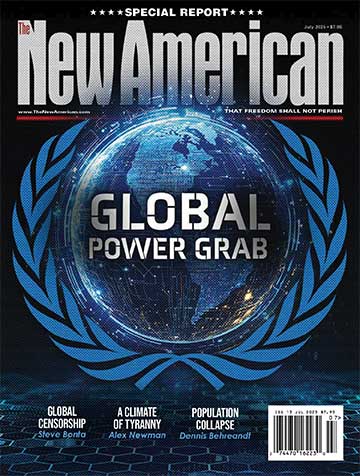
Coming on the heels of Merrill Lynch’s decision the day prior to be sold to Bank of America for approximately $50 billion to avoid a similar fate, the stock market reacted quickly, with the Dow Jones industrial average down more than 270 points at midday. By the close of the day’s trading, the Dow was down 504.48 points, the worst day on Wall Street since July 2002. Investors also were reacting nervously to the impending collapse of another financial giant, the American International Group, an insurance firm. A.I.G. has sought a $40 billion lifeline from the Federal Reserve, without which the company’s credit ratings will be downgraded, an event with potentially grave financial consequences.
The decision will have severe repercussions for the firm’s investors, clients, and employees alike. Unlike corporations in the non-financial sector, who often continue operations under Chapter 11 protection, federal bankruptcy law places more rigid restrictions on financial-services firms, preventing reorganization and a continuation of business. However, the firm intends to file motions that would, among other things, allow it to continue salary payments and insurance benefits to its employees. Moreover, a Chapter 11 filing gives the firm more control over the selling off of its assets than would a Chapter 7 filing.
In its bankruptcy petition, Lehman stated that, as of May 31, it had assets of $639 billion and debt of $613 billion. Its biggest unsecured creditors included Citigroup, with about $138 billion in bonds, and The Bank of New York Mellon Corp., which held about $17 billion of Lehman’s debt.
In a White House statement, President Bush tried to paint an optimistic picture:
In the short run, adjustments in the financial markets can be painful both for the people concerned about their investments and for the employees of the affected firms. In the long run, I’m confident that our capital markets are flexible and resilient, and can deal with these adjustments.
The decision came as weekend-long, last-ditch efforts to save the investment banking firm proved fruitless. During a Friday emergency meeting at the Federal Reserve building in Lower Manhattan attended by Treasury Secretary Henry M. Paulson, Jr., the bankers present were told that the government would not bail out Lehman. On Sunday the British bank Barclays PLC withdrew its bid to buy the floundering investment bank. Bank of America, another potential suitor of Lehman, followed suit.
The New York Times quoted former Lehman CEO (and Nixon administration secretary of commerce) Peter G. Peterson, whose reaction to the Merrill Lynch and Lehman actions was: “My goodness. I’ve been in the business 35 years, and these are the most extraordinary events I’ve ever seen.”
The Times noted that, in reaction to the day’s events, “The Fed … broadened the terms of its emergency loan program for Wall Street banks, a move that could ultimately put taxpayers’ money at risk.”
And yet, in the same analysis, the Times reported that both Federal Reserve Chairman Ben S. Bernanke and Treasury Secretary Paulson “had warned that they would not put taxpayer money at risk simply to prevent a Lehman collapse.”
Of all Wall Street financial institutions, Lehman Brothers would seem among the most invulnerable to collapse. The firm has been in existence for 158 years and, even by Wall Street standards, seemed thoroughly plugged-in to the network of financial establishment insiders. The firm is a corporate member of the Council on Foreign Relations (CFR), and its chairman and chief executive, Richard S. Fuld, who was the longest serving CEO on Wall Street, is also a CFR member. Even more significant, former Lehman Chairman Peter G. Peterson, who served as head of the firm from 1973-1985, succeeded David Rockefeller as the CFR’s chairman of the board.
An AP story on September 15 speculated about another possible consequence of the Lehman collapse, which was completely unexpected just days ago: an interest rate cut. It had been widely conceded by economists, picking up on signals from Fed Chairman Ben Bernanke, that the Federal Reserve, out of fear for “inflation,” would hold the line on interest rates for he rest of the year. But with the heavy fallout on Wall Street resulting from Monday’s events, observers began talking about a possible rate cut.
However, such speculation ended on September 16, when, at its regularly scheduled meeting, the Federal Reserve decided to keep the Fed Funds interest rate at two percent.
Among the reasons often cited for the Fed’s reluctance to lower interest rates any further is a fear of inflation. However, using the classic Economics definition of inflation — an increase in the money supply — this fear is apparently limited only to the effects of low interest rates on rising prices, which are a symptom of inflation. For, as the Associated Press reported on September 16:
Urgently trying to keep cash flowing amid a Wall Street meltdown, the Federal Reserve on Tuesday pumped $50 billion into the nation’s financial system to help ease credit stresses.
The Federal Reserve Bank of New York’s action comes in addition to its regular market operations to inject $20 billion into the system slated for the day.
Update: On September 16, the Federal Reserve agreed to salvage American International Group Inc. with an $85 billion infusion of taxpayer money. Under the arrangement, the Fed will get a 79.9 percent stake in AIG, along with the right to remove senior management. Under the deal, the Fed will provide a two-year, $85 billion emergency loan to AIG at an interest rate of about 11.5 percent.
(AP Images)




